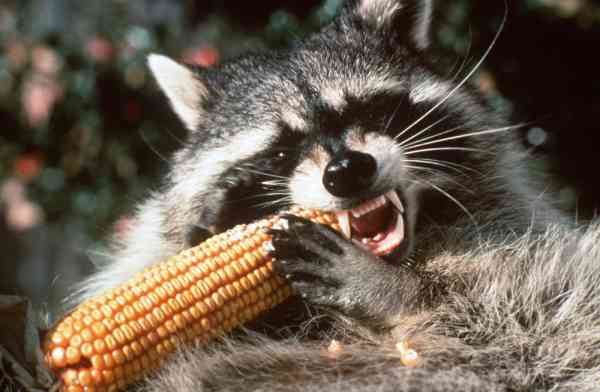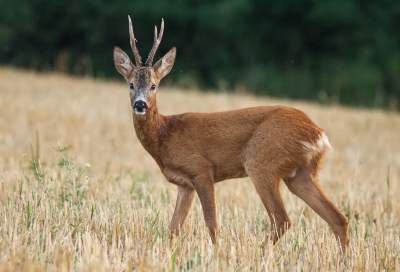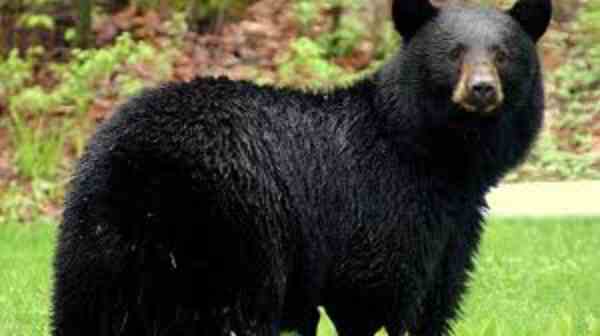Mulberries, with their luscious, juicy berries and vibrant foliage, have long been cherished by humans for their delectable taste and numerous health benefits. But what about the rest of the animal kingdom? As it turns out, mulberries are not just a human delicacy; they play a vital role in the diets of various creatures that inhabit our ecosystems. In this article, we embark on a journey into the intriguing world of What Animals Eat Mulberries and their affinity for mulberries.
From the playful antics of squirrels to the graceful feeding habits of birds, mulberries offer a nutritious and energy-packed feast for numerous animals. These sweet, juicy fruits are not only a treat for our taste buds but also a valuable source of sustenance for a wide array of wildlife. As we delve deeper into the surprising eating habits of animals, we’ll uncover the fascinating ways in which mulberries contribute to the ecological balance of our natural world. So, join us on this culinary exploration as we unveil the secrets of “What Animals Eat Mulberries.”
Mulberries: A Brief Overview

Mulberries, botanical treasures of the Morus genus, are deciduous trees that have captured the human palate for centuries. These trees, distinguished by their lush foliage and succulent berries, are a source of admiration for their visual beauty and a source of nourishment for their delectable fruits.
They thrive in diverse global regions and come in a range of varieties, including red, white, and black mulberries, each with its own unique flavor profile. These berries are celebrated not just for their exquisite taste and nutritional richness but also for their integral role in the diets of countless animals, making them an indispensable part of various ecosystems.
Mulberries in the Animal Kingdom
The influence of mulberries extends far beyond human consumption; they are critical players in the intricate web of the animal kingdom. These trees and their bountiful fruits beckon a diverse array of species, creating fascinating interactions within ecosystems. Their presence can alter the distribution and behavior of animals, shaping the natural world in intriguing ways.
Animals That Eat Mulberries
A. Herbivores:
Among the most enthusiastic consumers of mulberries are herbivorous creatures. Deer, rabbits, and squirrels, to name a few, relish the berries. Mulberries provide essential nutrients and energy, especially during seasons when other food sources may be scarce.
Songbirds:

Songbirds, a diverse group of avian species, often include mulberries in their diet during the fruit season. These small, agile birds, including robins, cedar waxwings, and orioles, are attracted to the sweet, juicy mulberries, which provide essential energy and nutrients during migration and breeding. Their ability to perch on branches allows them to access the fruits high in trees, making mulberries a valuable natural food source for these songbirds, aiding in their survival and reproduction.
Squirrels:

Tree-dwelling squirrels, such as the eastern gray squirrel, readily consume mulberries when they are in season. These agile rodents have adapted to climb trees effortlessly, granting them access to the ripe fruits. Mulberries serve as a nutritious supplement to their diet, which primarily consists of nuts and seeds. This opportunistic feeding behavior helps sustain squirrel populations and contributes to their overall dietary diversity.
Raccoons:

Raccoons, known for their adaptability, readily include mulberries in their diet when the opportunity arises. As opportunistic omnivores, they relish the sweet and juicy mulberries, which are just one of many food items in their diverse repertoire. Their ability to forage for a wide range of foods, including fruits like mulberries, makes them resourceful animals capable of thriving in various environments.
Deer:

White-tailed deer, commonly found in wooded regions, have been observed grazing on mulberry leaves and fruits. While they primarily feed on vegetation such as leaves, twigs, and grasses, mulberries can be a seasonal dietary component, providing them with additional nutrition when available. This opportunistic foraging behavior helps supplement their diet and supports their overall health, especially in areas where mulberries are prevalent.
Rabbits:

Both wild and domestic rabbits may include mulberry leaves in their diet, and occasionally fruits if they have access to them. These herbivorous animals appreciate the green foliage of mulberry trees, which adds variety to their diet. While mulberries may not be a staple, they contribute to the nutritional intake of rabbits, particularly in regions where mulberries grow abundantly.
Opossums:

Opossums, opportunistic feeders, may incorporate mulberries into their diet when they come across them. As omnivorous creatures, they are adaptable and will consume a wide variety of foods, including fruits like mulberries, to satisfy their dietary needs. Mulberries provide a sweet and energy-rich option for opossums when they are in season.
Turtles:

Some freshwater turtle species, especially those with herbivorous or omnivorous diets, may consume mulberries if the fruits fall into the water. These turtles are opportunistic feeders, and mulberries can be a seasonal addition to their diet when they are within their reach in aquatic environments.
Insects:

While not mammals, various insects, including ants, bees, and beetles, are drawn to mulberry flowers for nectar and pollen. These tiny creatures play a crucial role in the pollination process of mulberry trees, facilitating fruit production. The interaction between mulberries and insects highlights the interconnectedness of ecosystems and the role insects play in the reproduction of flowering plants like mulberries.
B. Omnivores and Carnivores:
Omnivorous creatures, such as raccoons and opossums, incorporate mulberries into their diet, relishing their availability and nutritional benefits alongside other plant and animal-based foods. While carnivores primarily subsist on meat, certain species like bears occasionally indulge in mulberries when they are in season, adding a sweet note to their dietary repertoire.
Black Bears:

Black bears, as opportunistic omnivores, incorporate mulberries into their diverse diet when these juicy fruits are in season. For these bears, mulberries provide not only a sweet treat but also essential nutrition and hydration. Their adaptable eating habits enable them to switch between plant-based and animal-based foods, ensuring they make the most of available resources.
When mulberries are abundant, they become a valuable component of the black bear’s diet, supporting their growth and overall health. This dietary flexibility is a key survival strategy, especially in regions where mulberries are prevalent, and it highlights the adaptability of these charismatic omnivores.
Raccoons:

Raccoons, well-known for their omnivorous nature, readily indulge in mulberries when the opportunity arises. Alongside their penchant for insects, small mammals, and human food scraps, mulberries represent a natural and seasonal delight for these adaptable creatures. Raccoons’ diverse palate allows them to thrive in various environments, as they skillfully navigate both urban and wild landscapes.
When mulberries are in season, raccoons take advantage of the ripe, sweet fruit, showcasing their opportunistic approach to food acquisition. This dietary flexibility has contributed to their success as urban wildlife, where they make use of a wide range of available food sources.
Foxes:

Foxes, as omnivorous animals, exhibit a versatile diet that includes fruits, small mammals, birds, and more. While not primarily frugivores, foxes may consume mulberries when they are accessible in their habitat.
These cunning predators rely on their keen senses to locate potential food sources, and when mulberries are in season, they can be another item on their menu. Foxes’ dietary adaptability allows them to capitalize on food availability in their environment, showcasing their resourcefulness in the wild.
Primates:
Certain primates, like raccoon monkeys and some lemur species, are omnivorous and may include mulberries in their varied diet. While they primarily consume fruits, leaves, and insects, when mulberries are available, they can become a sought-after food source for these intelligent and agile primates.
Their ability to adapt their diet to changing food availability demonstrates their evolutionary flexibility in utilizing the resources of their respective habitats.
Pigs:

Domestic pigs and feral pigs are omnivorous animals that have a voracious appetite for a wide variety of foods. In addition to roots, tubers, and small animals, these pigs will readily consume mulberries if they come across them in their foraging.
The succulent and sweet nature of mulberries can make them an enticing addition to the pig’s diet, especially when they are in season. This omnivorous behavior reflects the adaptability of pigs as domesticated livestock or wild foragers, depending on their living conditions and environment.
Coatis:

Coatis, omnivorous mammals found in parts of the Americas, possess a flexible diet that includes a wide range of foods. While they are opportunistic feeders, their primary focus is on animal matter such as insects, amphibians, small mammals, and invertebrates. Fruits, including mulberries, are indeed part of their diet, especially when these resources are seasonally abundant.
Coatis use their keen sense of smell and sharp claws to forage efficiently for both plant and animal prey. However, it’s essential to note that while mulberries might be on the menu, they are not a dominant or primary food source for these agile creatures. Coatis’ adaptability to various foods allows them to thrive in diverse habitats, but their carnivorous tendencies remain a defining aspect of their dietary habits.
Carnivorous Birds:

Carnivorous birds of prey, including eagles, hawks, and falcons, are renowned for their exceptional hunting skills and preference for animal prey. Their sharp beaks and talons make them efficient predators of small mammals, birds, and reptiles. While they are true carnivores, it is exceedingly rare for them to consume mulberries or other plant materials.
Their diet is optimized for high-protein, animal-based nutrition, and they have evolved specialized adaptations for hunting and capturing live prey in their natural environments. These birds’ keen eyesight and aerial prowess enable them to locate, pursue, and capture their animal prey with remarkable precision. Thus, while they may occasionally encounter mulberries, they remain primarily focused on hunting and consuming animals to meet their nutritional needs.
The Role of Mulberries in Animal Diets
Mulberries boast an impressive nutritional profile, brimming with vitamins, minerals, and antioxidants. This makes them a crucial source of sustenance for animals, aiding in their growth and overall survival. Moreover, mulberries can influence the behavior and migration patterns of certain species as they seek out these valuable food sources. Understanding the dietary importance of mulberries is paramount in comprehending the delicate balance of ecosystems.
Interactions Between Animals and Mulberry Trees
The relationship between animals and mulberry trees transcends mere consumption. Many animals contribute to the propagation of these trees by dispersing mulberry seeds. Birds, in particular, play a significant role as they consume mulberries and then transport the seeds to new locations through their droppings. This mutualistic relationship highlights the interconnectedness of species within ecosystems.
Conservation Considerations
Recognizing the vital role of mulberries in animal diets underscores the importance of conserving these trees and their natural habitats. The encroachment of human activities on wildlife habitats necessitates the protection of these valuable food sources to ensure the well-being and survival of various animal species. Preserving these ecosystems, which rely on the presence of mulberries, becomes an urgent conservation priority.
Final Words
Mulberries, far from being just a human delight, are indispensable components of the diets of numerous animals, ranging from herbivores and omnivores to occasional carnivores. These fruits, with their nutritional richness and ecological significance, contribute to the delicate balance of ecosystems.
Understanding the intricate relationships between mulberry trees and wildlife underscores the urgency of conservation efforts to safeguard these vital habitats and ensure the survival of the many species that depend on mulberries for sustenance. The future of these ecosystems and the diverse creatures that inhabit them hinges on our commitment to preserving the precious natural world.
Reference:
- https://georgiawildlife.com/out-my-backdoor-mulberries-get-no-respect-they-should
- https://www.nativnurseries.com/products/black-cherry-mulberry-fall-fruit-tree-package
- https://www.kpcnews.com/columnists/neil_case/kpcnews/article_92858925-90ab-5a3a-8a94-f424ba54669d.html

Rahul M Suresh
Visiting the Zoo can be an exciting and educational experience for all involved. As a guide, I have the privilege of helping students and visitors alike to appreciate these animals in their natural habitat as well as introducing them to the various aspects of zoo life. I provide detailed information about the individual animals and their habitats, giving visitors an opportunity to understand each one more fully and appreciate them in a more intimate way.









